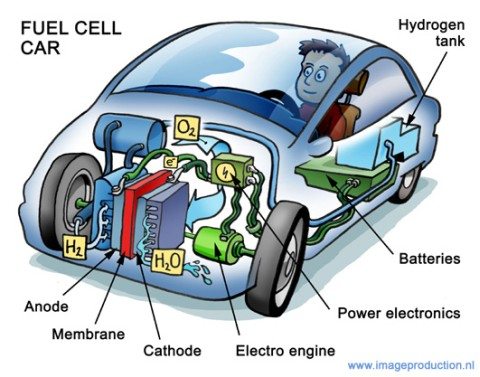Fuel cell vehicles could be an attractive alternative to battery-powered cars in realizing zero-emission vehicles. Fuel cells have long been considered a promising technology for circumventing the problem of limited battery range. However, success depends heavily on the price. “So far the high production costs of fuel-cell systems and the lack of infrastructure have prevented the long anticipated launch on the mass market,” says Wolfgang Bernhart, Partner at Roland Berger Strategy Consultants.”Even though the costs for manufacturing fuel-cell systems will drop considerably in the future, major technical obstacles must first be overcome before fuel cells achieve a breakthrough in the automotive sector.”
A new study by Roland Berger Strategy Consultants entitled “Fuel cells – A realistic alternative for zero emission?” paints a fairly bleak picture of this technology over the medium term. According to the experts at Roland Berger, it will be possible to cut production costs for fuel-cell systems by up to 80% by 2025. Even though this will provide fuel-cell technology with initial business opportunities, this reduction will still not be enough to achieve a breakthrough on the market.
A fuel-cell system currently costs around EUR 45,000 per vehicle. Accounting for up to 45% of the costs is the membrane electrode assembly (MEA), which converts hydrogen into electric energy and which is made of expensive platinum. Even assuming mass annual production of 300,000 fuel-cell vehicles, platinum would still account for more than 70% of the manufacturing costs – one MEA alone would still cost approx. EUR 2,500 per vehicle. If it were actually possible to somehow optimize the manufacturing process, such as by reducing the amount of platinum needed to a mere 15 grams per vehicle, the experts at Roland Berger believe costs could be cut to about EUR 1,000. Platinum, however, would remain the biggest cost driver.
On top of this, platinum is a very scarce resource. The market for this precious metal is very tough and companies believe that the notion of increasing supply while maintaining current prices is unrealistic. “Against this backdrop it’s unlikely that fuel-cell vehicles will be able to establish themselves on the market long term – especially because of the very limited supply of platinum,” according to Bernhart, the study’s author.
This means many car manufacturers are focusing their development on platinum-free fuel-cell technology. Nevertheless, such alternatives are still far from being ready for mass production. “Carmakers, therefore, need to earmark their R&D budgets very carefully and precisely in order to achieve a leading position in developing a zero-emission vehicle,” says Bernhart.
Over the medium term, however, it can be expected that fuel cells will maintain a niche existence as a drive system. “Only after a breakthrough is achieved in manufacturing platinum-free systems will it be possible to tap the significant market potential,” explains Bernhart. “Ultimately, we can expect battery-based and hybrid drivetrains to play the leading role in forging the way to zero-emission mobility in the near future.”

